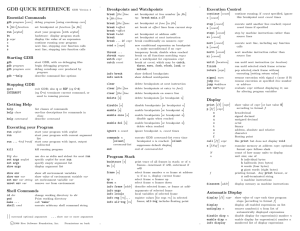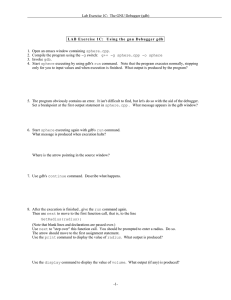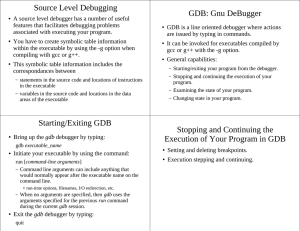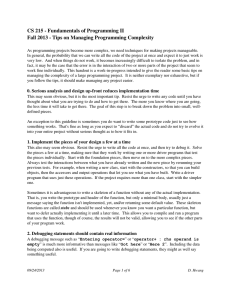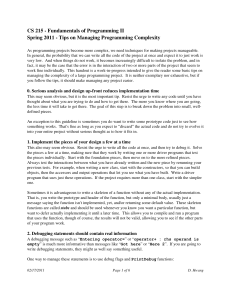Data Structures & GeoDatabase
advertisement
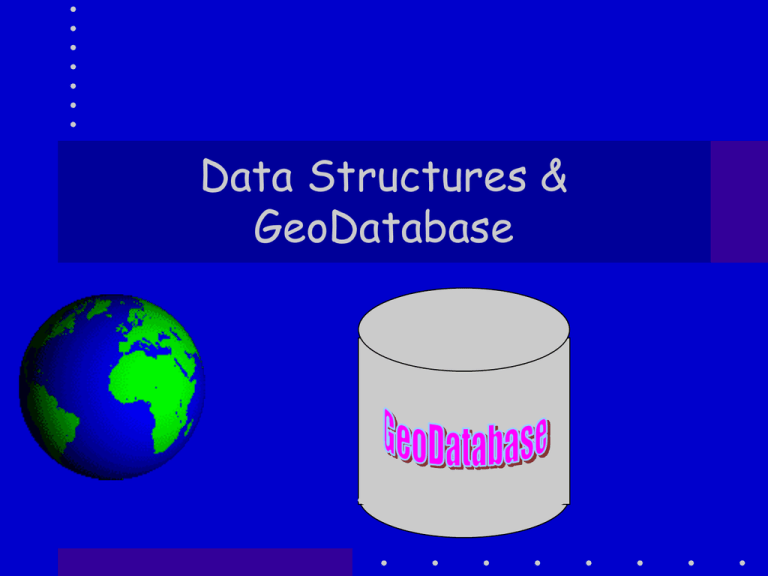
Data Structures &
GeoDatabase
Introduction
• You have been using GDBs from
nearly the start of the course
• Why?
• Because I think that most of the time
you will be using GDBs!
• And…
Why?
• Because it is a convenient way to manage
data
– All types of data can be included
– Features can be “smart”
– Support of ArcGIS Data Models
• Because it provides an organizational
structure that can represent real world
features and behaviors (topology)
Know what?
•
•
•
•
•
•
•
How to create a GDB
How to create a FC
How to create a FDS
What you can put into a GDB
What you can put into a FC
What you can put into a FDS
And How you add it to these parts of a GDB
• File
–
–
–
–
Flavors of GeoDatabases
Small groups, one edit, fast, smaller
Collection of files
Stores ~1 terabyte of data
File folder
• Personal
– Small groups, one edit, Access DB, one file
– Storage limited to ~2 gigabytes
– Microsoft Access DB (so mdb is extension)
• ArcSDE
–
–
–
–
SDE = Spatial Database Engine
Enterprise version
Large groups working with data, including editing
Usually on a Server
Gray!
The Geodatabase
• It is a single container for many feature
classes (FC) (layers, {themes} of any one
feature geometry and geography
• Quite often the FCs are stored in
Feature Datasets (FDS)
• Data in a FDS can be topologically linked
• Topological links
• Annotation can be stored in the GDB
• Data files also
Feature Class (FC)
• Conceptual representation of a category
of geographic features.
• Can include 1 or more point, line, & area
features
– but only one of these geometry types
– And must be of the same spatial reference
• Data has to be Loaded or Imported
Feature Dataset (FDS)
• A collection of feature classes that share
the same spatial reference.
• It is because they share the same spatial
reference that they can participate in
topological relationships with each other.
• Several feature classes may be stored in
the same feature dataset.
• Many kinds of features and objects
(tables) can be included
The GDB itself
• Has no spatial reference
• Is not fussy about what is put into it
• Features do not have to have the
same spatial reference – but must
have one!
The possibilities…
From ESRI’s course Learning ArcGIS Desktop
GDB
Icons
Feature Dataset
GDB table
Catalogof
View
Views
GDB
WE view
Views of GDB
WE view
Catalog View
Annotation
Vector data: Network
Topologies
• Many datasets have features that
could share boundaries or corners
• By creating a Topology you set up
rules defining how features share
their geometries.
• Editing a boundary or vertex shared
by two or more features updates the
shape of all of them.
Topologies
Geometric Networks
• Some vector datasets need to support
connectivity tracing and network
connectivity rules
–
–
–
–
Streams and rivers
Communications
Pipelines
Transportation (roads, railroads, canals)
• Geometric networks allow you to turn
simple point and line features into network
edge and junction features
Summary of data types
Name
Range, length
Applications
Short
Integer
-32,768 to
32,767
No fractions
Long
Integer
-2,147,483,648
To
2,147,483,647
No fractions
Float
~-34E-38 to
~1.2E38
Fractional
values
Summary of data types
Name
Range, length
Applications
Double
~ -2.2E-308
~ 1.8E308
Fractions OK
Text
<=64,000 char
Names etc.
Date
mm/dd/yy
hh:mm:ss
Date and time
Precision and Scale
• When creating new fields an
attribute table You will be
asked for these
• Precision: Describes the
number of digits that can
be stored in the field. All
digits are counted no
matter what side of the
decimal they are on. But not
the decimal point.
Scale
• Scale:Sets the number of decimal places
stored in a field. Used in Float and Double data
field types.
• If the input table is a personal or file
GeoDatabase the field scale will be ignored.
• The number 1234.567 would have a precision
of 7 and a scale of 3.
• The business of precision and scale is actually
much more complicated than this
Planning
• What is the problem?
• What data is needed (map scale, extent,
etc.?
• What kinds of relationships are needed
between FC?
• How will the data be organized (FDS)?
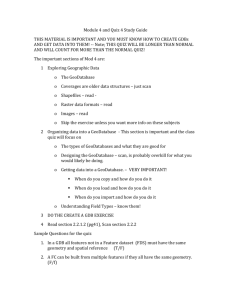
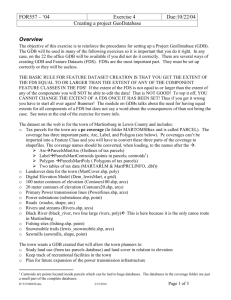
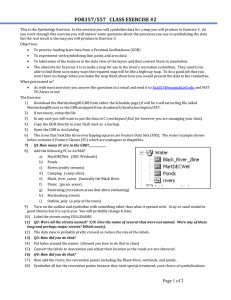
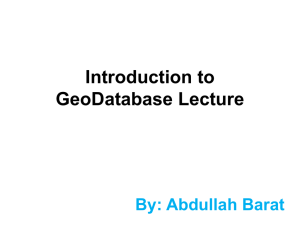
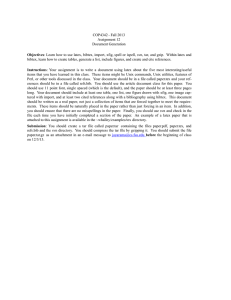
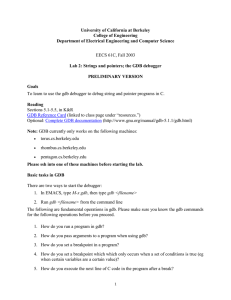
![Bypassing non-executable-stack during exploitation using return-to-libc by c0ntex | c0ntex[at]gmail.com -----------------------------------------------------------------------](http://s2.studylib.net/store/data/013545887_1-afe5a8357cef795add2a8b1820713fbe-300x300.png)
